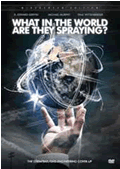by Beverly Eakman
November 15, 2013
NewsWithViews.com
Surveillance monitors and bracelets; key cards; Smart Cards; Radio Frequency Identification tags, labels, and toll collectors; followed by the newest wave of subdermal implants (ostensibly to keep the kids and Grandma safe). Hidden GPS satellite tracking; concealed webcams; and long-distance audio-visual transmitters. Sped cameras; red-light cameras; then, newer obscured “speedcam” traps and mobile, hidden cameras; with subsequent, multipurpose integrated cameras.
All these eventually proved themselves to be about revenue, not road safety or even crime-prevention, as increasing news reports revealed how deals were cut between city officials,contractors, vendors, and the terminally gullible. Billions of dollars are flowing from petty speed infractions alone — in to what often should have been public coffers. Individuals were tricked by scam artists selling implant “safety” using loopholes in privacy and scaring hovering parents.
But as roads continued to go unrepaired, and crimes like robbery, burglary and vandalism remained mostly uninvestigated (unless the victim or institution was high-profile and influential), most folks realized it was all about the money.
Until, suddenly, it was about something much more vicious.
Presumably to coincide with the upcoming patriotic holiday, the Federal Aviation Administration made it official on November 8, just before Veterans Day, that its homeland surveillance plan which had been quietly in-work since February 2012, when Barack Obama signed the FAA reauthorization bill, was set to test some 7,500 drones across six sites nation wide, in preparation for a switchover from military applications during the “War on Terror” to domestic crime-fighting, data-collection and—if there is time left over—rescue operations.
Respected media outlets like Business Insider, USA Today, United Press International, The New American and even the American Civil Liberties Union panned the budding scheme in 2012. But reporters were expecting a major roll-out to be closer to the year 2020. Author-educator Charles Scaliger revealed to The New American that these drones were capable of targeting a plot of land the size of a person’s backyard; some armed, others not. His story carried a photo of a sprawling structure implementing the coming drone surveillance on US soil.
Related stories started unfolding as well, but public outcry remained tepid. A Washington Times cover story by staff reporter Ben Wolfgang centered on an August convention hosted by the Association for Unmanned Vehicle Systems International, which was showcasing its wares for all kinds of interested parties — law enforcement, People for the Ethical Treatment of Animals (PETA), the Environmental Protection Agency (EPA) and maybe even a few salivating terrorists. Photos showed “drones” (a term discouraged by convention hosts, in favor of Unmanned Aerial Vehicles) so small they could fit on the corner of a table or in the palm of one’s hand.
Meanwhile, television has been “prepping” a younger population already awash in techno-thrillers. Beginning with TV shows like Fox’s “24” in 2001, producers and script writers have hyped whiz-bang surveillance gadgets —nifty fiber-optics without restriction. Any computer security could eventually be “hacked”; no image was too distorted to eventually identify; no location was too remote for satellite probes or thermal sensors. Culprits and heroes alike could encrypt and decrypt files, wipe or salvage entries.
Today, shows like NCIS, Person of Interest, and Criminal Minds are built around not just a “rock ’em-sock ’em hero,” but the requisite, nerdy techno-geek, who connects enough of the electronic dots to foil horrific large-scale crimes.
Too bad average viewers can’t connect enough dots between real news stories to see that they are targets of a perception management campaign.
Americans—especially those under age 45—are being acclimated to a police state. An entire generation (and now their progeny) has grown up with “no expectation of personal privacy,” as dictated by the US Supreme Court. Unlike their grandparents of pre-1960s vintage, every detail of one’s comings and goings is subject to inspection. Adults over age 50 remember carrying a bottle of aspirin to school without the slightest repercussion. Today’s youngsters are treated like junkies and even suspended, complete with a personal reprimand permanently retained in their electronic files. Metal detectors, searches for preposterously “banned” items (like patriotic hats), smart-IDs, inspection of social media for crimes-of-opinion —all the typical harassment of a 21st century school experience.
Parents, meanwhile, are discouraged from transmitting American ideals; the concept of “probable cause” has virtually disappeared.
We essentially are struggling here with three issues: (1) impersonalized, militarized crime prevention and policing; (2) coercive and deliberate use of intimidating technologies against law-abiding citizens; (3) manufactured us-versus-them battles over self-protection. According to researchers James M. Byrne (Professor of Criminal Justice and Criminology, University of Massachusetts, Lowell) and Gary T. Marx (Professor Emeritus at MIT), we are embroiled, essentially, in a Second Technological Revolution.
Byrne and Marx differentiate “hard-technological innovations” from “soft technologies.”
[Technological advances] can be divided into two broad categories: hard technology (hardware or materials) and soft technology (computer software, information systems). Hard technology innovations include new materials, devices, and equipment that can be used to either commit crime or prevent and control crime. An initial distinction can be made between criminal justice innovations that have a hard material base as against a less tangible information soft base (even if in practice these are often interwoven).-- “Technological Innovations in Crime Prevention and Policing: A Review of the Research on Implementation and Impact,” (See National Criminal Justice Research Service).
So, hard technologies include bullet-proof glass; interconnected security systems like “traffic cams” (under whatever label: Safety, red-light, speed, etc.);so-called gated communities, which incorporate electronics;and “personal protection devices” such as Tasers, mace, panic buttons, and ignition-interlock systems “with alcohol-sensor devices to prevent an individual from starting a car while intoxicated.”
Drones are not mentioned in the 2011 research paper.
Soft technologies revolve around the strategic use of information to prevent crime (e.g.,risk assessment and “threat-assessment instruments”) as well as strategies intended to improve the performance of the police (“e.g., predictive policing technology, and recording/video streaming capabilities in police vehicles”). Predictive policing technology is rarely admitted, although I have referred to it repeatedly as being potentially the single most significant innovation of the lot. So, it is little wonder that “soft technology” includes software programs, classification systems, behavioral-analysis (“psy-ops”) techniques, along with data sharing and “systems integration” techniques.
Byrne and Marx astutely point out that even if you put the best spin on it — crime prevention — both the soft and hard technologies have made life more stressful, and come with negative side-effects for a representative democracy.
For example, encryption offers security, they say, but at increased expense and time required for a transaction, not to mention the potentially disastrous loss of a password or key card. More significantly, Byrne and Marx remind us that these technologies, while “directed at offenders, may backfire.” They could end up alienating the very public they seek to protect, resulting in a totalitarian-style crackdown if push comes to shove.
Arguably, this is already occurring, which is why the Tea Party and other resistance groups are suddenly emerging:
The authors point out little-known factors, such as that “teargas and other crowd-control devices [can] lead to loss of bowel control”; that remote cell phone and other electronic signals can “impact devices such as pace-makers or garage door [openers].” Electronic devices “activated by a biometric control or a code from their owner” may actually increase violent confrontations between victims and offenders.
Documenting ever more “criminal” behaviors may increase accountability, but it also has caused law enforcement to “go easy” for fear of civil rights lawsuits. Worse, what used to be called “discretion” can no longer be practiced in gray areas that are now the source of so many lawsuits, as exemplified in the George Zimmerman case. In particular, so-called “risk-prediction” tends to turn a hunch by an experienced professional into so-called “profiling,” which is the new code word for racism and bias. And the Constitution provides legitimacy for the complaint that individuals have a right to be judged on the basis of their actual behavior, as opposed to being assessed upon a prediction of future behavior. This issue, we are reminded, “is at the core of films such as Minority Report….”
Some Justice Department staffers, when I was employed there in the 1990s, were already saying that use of body armor had led to offenders using better, more powerful weapons than police — another irony.
So, what kind of a society are we creating? Now that we have a generation of Americans who are increasingly fascinated with “gotcha” gadgets, and accustomed to snowballing regimentation and snooping by bureaucrats, the tenets upon which this nation’s founding were predicated — self-sufficiency, self-discipline and self- determination — are being lost.
The problem with techno-thriller television is not, as Deb Schindler insisted in her May 31, 2011 article, that the technologies portrayed either don’t exist, or even that they don’t perform as smoothly as depicted on TV. Former NSA contractor Edward Snowden, whether you view him as a traitor or whistle blower, has proved at least that much by exposing such systems as PRISM.
The overriding point is that the capability for a massive police state has arrived. Experts, spurred on by political-correctness-driven politicians, can now combine and retain information in such a way as to make anyone appear guilty — unless the targeted individual is willing to spend a fortune on defense attorneys.
| Subscribe to the NewsWithViews Daily News Alerts! |
So, the real challenge lies in the positive spin given to techno-surveillance, which people inevitably get from TV,coupled to ever-increasing advertising for spiffy new“apps.”
The raw truth is that law enforcement is NOT protecting the public, regardless of any advances in technology. Gated communities exist because crime is so far removed from its pre-1960s level that detectives no longer devote time to what they see as “routine cases.”
This means the American lifestyle is seriously in jeopardy, which, in turn, makes a backlash, at some point, increasingly likely — followed by a“necessary” imposition of martial law.
Will 7,500 drones be the tipping point?
� 2013 Beverly Eakman - All Rights Reserved
Beverly K. Eakman’s 8th book, PUSH BACK! How to Take a Stand Against Groupthink, Bullies, Agitators and Professional Manipulators (Skyhorse Publishing), has an expected release date of January 2014.Mrs. Eakman began her career as a teacher, left to become a scientific writer for a NASA contractor, and went on to serve as a speech writer for the head of the Voice of America and for the chairman(a former U.S. Supreme Court Justice) of the Commission on the Bicentennial of the U.S. Constitution. She was a writer for the U.S. Dept. of Justice before retiring from federal government. Her first book in 1991 blew the whistle on misrepresented standardized testing of schoolchildren. She specializes in covering education policy, mental-health fraud, data-trafficking, privacy and political agitation strategies.
Her website is: beverlyeakman.com
E-Mail:
BKEakman@gmail.com















 Share
This Article
Share
This Article








